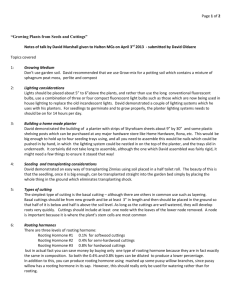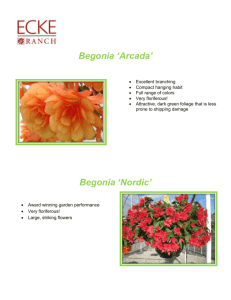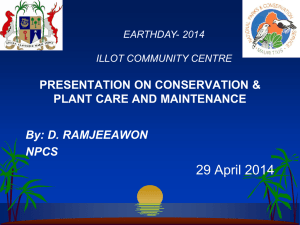Take this link to the full report. - Hayling Island Horticultural Society
advertisement
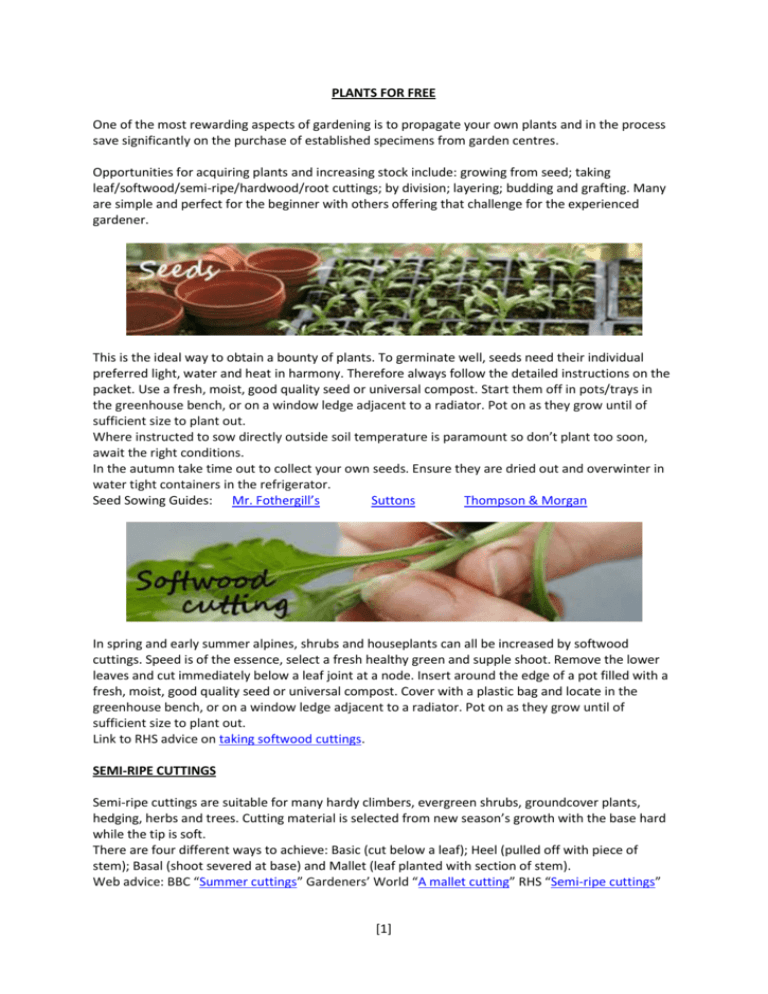
PLANTS FOR FREE One of the most rewarding aspects of gardening is to propagate your own plants and in the process save significantly on the purchase of established specimens from garden centres. Opportunities for acquiring plants and increasing stock include: growing from seed; taking leaf/softwood/semi-ripe/hardwood/root cuttings; by division; layering; budding and grafting. Many are simple and perfect for the beginner with others offering that challenge for the experienced gardener. This is the ideal way to obtain a bounty of plants. To germinate well, seeds need their individual preferred light, water and heat in harmony. Therefore always follow the detailed instructions on the packet. Use a fresh, moist, good quality seed or universal compost. Start them off in pots/trays in the greenhouse bench, or on a window ledge adjacent to a radiator. Pot on as they grow until of sufficient size to plant out. Where instructed to sow directly outside soil temperature is paramount so don’t plant too soon, await the right conditions. In the autumn take time out to collect your own seeds. Ensure they are dried out and overwinter in water tight containers in the refrigerator. Seed Sowing Guides: Mr. Fothergill’s Suttons Thompson & Morgan In spring and early summer alpines, shrubs and houseplants can all be increased by softwood cuttings. Speed is of the essence, select a fresh healthy green and supple shoot. Remove the lower leaves and cut immediately below a leaf joint at a node. Insert around the edge of a pot filled with a fresh, moist, good quality seed or universal compost. Cover with a plastic bag and locate in the greenhouse bench, or on a window ledge adjacent to a radiator. Pot on as they grow until of sufficient size to plant out. Link to RHS advice on taking softwood cuttings. SEMI-RIPE CUTTINGS Semi-ripe cuttings are suitable for many hardy climbers, evergreen shrubs, groundcover plants, hedging, herbs and trees. Cutting material is selected from new season’s growth with the base hard while the tip is soft. There are four different ways to achieve: Basic (cut below a leaf); Heel (pulled off with piece of stem); Basal (shoot severed at base) and Mallet (leaf planted with section of stem). Web advice: BBC “Summer cuttings” Gardeners’ World “A mallet cutting” RHS “Semi-ripe cuttings” [1] HARDWOOD CUTTINGS A simple way to propagate a wide range of hardy shrubs, trees and climbers. They can take several months to produce roots, so leave them for a year before lifting and potting up or transplanting. Web link to Alan Titchmarsh video: “How to take hardwood cuttings”. Web advice on taking hardwood cuttings: BBC Gardening Gardeners’ World Root cuttings can be used to propagate a range of herbaceous perennials in late autumn or early winter when the plants are dormant. Web advice on taking hardwood cuttings: RHS Gardeners’ World LEAF CUTTINGS Some plants can be propagated from a whole or a part of a leaf. It is an easy way to increase numbers of our favourite indoor plants. Web advice on taking leaf cuttings: RHS Fibrous rooted plants can be divided up in both spring and autumn. Undertake at three year intervals to maintain plant vitality. Divide by pulling apart with two forks or slicing with a spade. Web advice on division: BBC Gardening RHS Saga Gardening BULBS Bulbs can be increased by division (offsets produced naturally at base), bulbils (produced in the leaf axils), scales (pealed from the parent bulb) and chipping (cutting the parent bulb into sections). Web advice: RHS [2] TUBERS Dahlias can be increased in the spring when at first stages of growth Web advice: BBC Gardening Gardeners’ World RHS RHIZOMES Old bearded irises produce less flowers so rejuvenate by lifting and cutting the younger rhizomes which have grown around the old ones. Web advice: RHS American Iris Society LAYERING Web advice on layering: Web advice on air layering: RHS BBC Gardening RHS [3] Layering Runners: Used where the parent plant produce stems which contain at the end a small identical plant. These are left attached and pegged directly into the soil or pots until growing individually. Web advice on layering runners: Strawberries The following two techniques offer a challenge for the experienced gardener: Used to propagate roses and is undertaken from June to September. Web advice; RHS Roses can also be propagated by hardwood cuttings, semi-ripe cuttings, division, layering and even from seed. Grafting combines one plant's qualities of flowering or fruiting with the roots of another that offers vigour and resilience. This is a difficult task and requires lots of skill and practice. Web advice: RHS Grafting can also be employed with cacti and tomatoes. END [4]



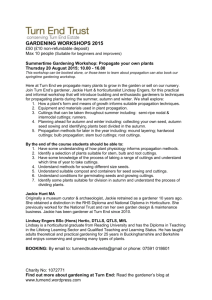
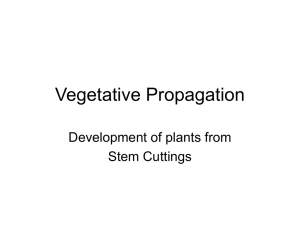
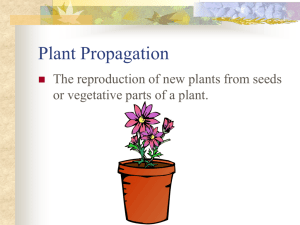
![Asexual Propagation of Plants [Compatibility Mode]](http://s3.studylib.net/store/data/008320128_1-e5a49840c65356f0434ae4fc6d082a17-300x300.png)
